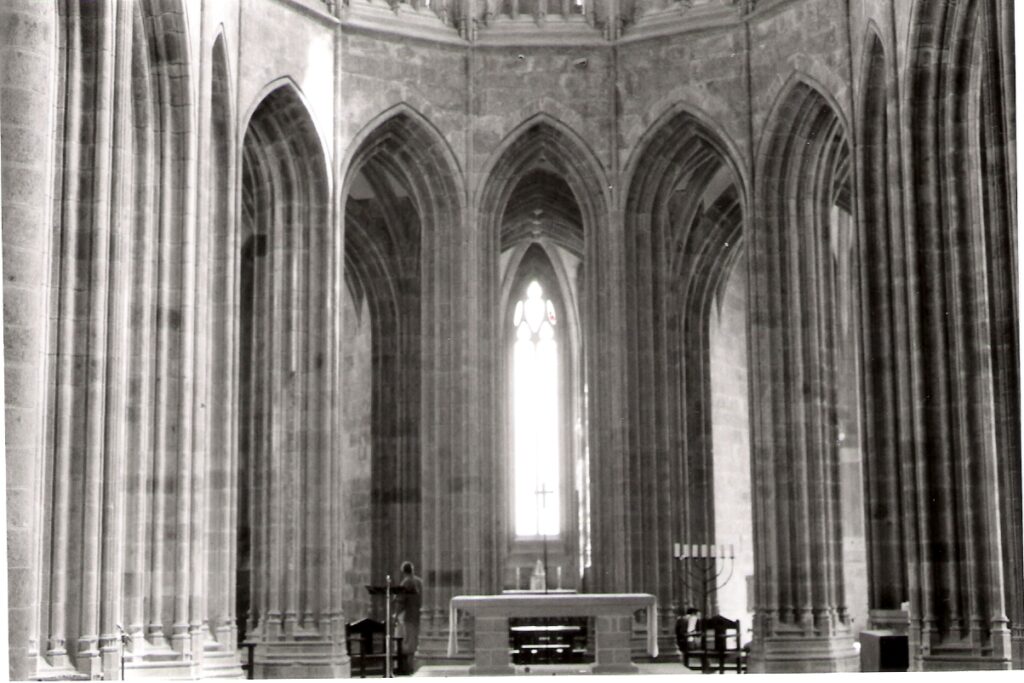
Perhaps the most apt phrase to convey what the “new monasticism” is about is from Wayne Teasdale (1945-2004): a monastery without walls. (This is also the title of one of his books.) While a monk (or nun) is someone who has set themselves apart based on the taking of vows, traditionally a monastery has been a building that houses the monks and that in being its own building, is set apart from other buildings in the city – or was built outside a city in a remote or wild place. Part of that tradition, tied to the prominence of Christianity and the church throughout European history, was a strong sense of the “otherworldliness” of God, the divine, the spiritual, and therefore key to the special character of the monastery was how it was “closer” to that other world in setting itself apart from this world. To invoke a monastery without walls, is to put full emphasis on the spiritual calling of the monk as defining their work, and that this work is very much spiritual work in the ordinary world, with no walls to house any “otherworldliness”. It speaks to the end of the dominance of Christianity and the church as religious institutions in the West; and it also speaks to the very old but still ongoing spiritual calling of the monk taking a new contemporary form, one that foregrounds a deep engagement in and with this world. The “new monastic” is a new version of the traditional monk, with the background to the monk’s spiritual work being a post-religious world – i.e., no single religion dominates, but a plurality occupy the scene, as well as a plurality of spiritual orientations rooted in, deviating from, adopting, or adapting, the traditional forms, as well as innovating entirely new spiritual forms.
As Rev. Adam Bucko, co-author of Occupy Spirituality: A Radical Vision for a New Generation and The New Monasticism: An Interspiritual Manifesto for Contemplative Living, argues, the new monasticism is about bringing that spiritual life of the monastic composed of contemplative prayer and also work – often an activist work of social justice, in urban places of poverty and homelessness and need – into those places the monk works, and thus infusing them (rather than the monastery building and grounds) with the spiritual presence they carry. Bucko has enacted the deep engagement of the monk with the world in co-founding the Reciprocity Foundation, based on and continuing the many years Bucko has spent working with homeless youth in New York City. In developing programs to end youth homelessness and provide them with spiritual care, Bucko embodies what new monasticism is, acting as spiritual mentor in a post-religious world.

